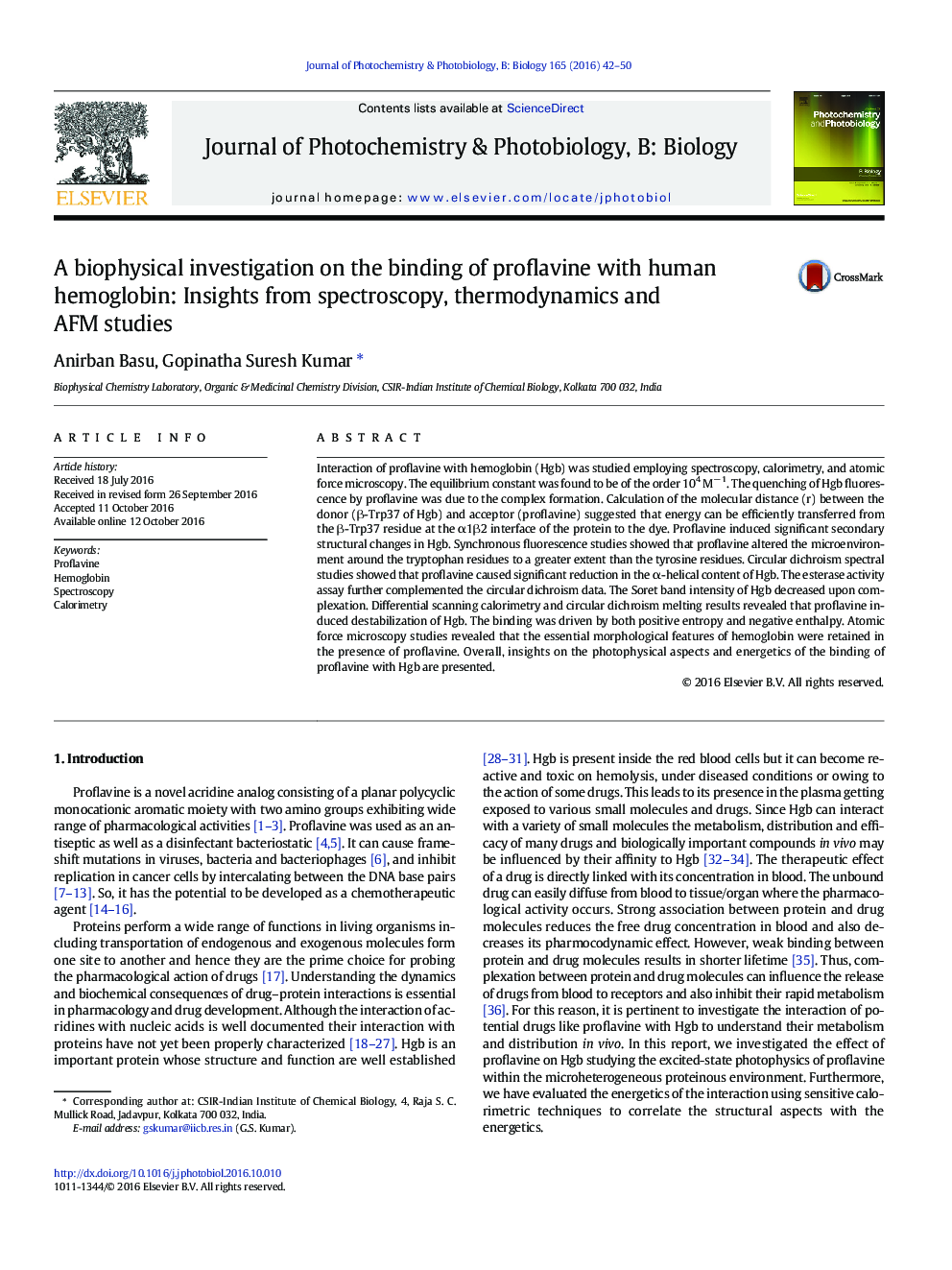| کد مقاله | کد نشریه | سال انتشار | مقاله انگلیسی | نسخه تمام متن |
|---|---|---|---|---|
| 6452574 | 1418068 | 2016 | 9 صفحه PDF | دانلود رایگان |

- The interaction of proflavine with human hemoglobin has been studied.
- Proflavine caused significant quenching of the intrinsic fluorescence of hemoglobin.
- The quenching was due to complexation between proflavine and hemoglobin.
- Proflavine induced significant secondary structural changes in hemoglobin.
- DSC studies showed that the binding reaction caused destabilization of the protein.
Interaction of proflavine with hemoglobin (Hgb) was studied employing spectroscopy, calorimetry, and atomic force microscopy. The equilibrium constant was found to be of the order 104 Mâ 1. The quenching of Hgb fluorescence by proflavine was due to the complex formation. Calculation of the molecular distance (r) between the donor (β-Trp37 of Hgb) and acceptor (proflavine) suggested that energy can be efficiently transferred from the β-Trp37 residue at the α1β2 interface of the protein to the dye. Proflavine induced significant secondary structural changes in Hgb. Synchronous fluorescence studies showed that proflavine altered the microenvironment around the tryptophan residues to a greater extent than the tyrosine residues. Circular dichroism spectral studies showed that proflavine caused significant reduction in the α-helical content of Hgb. The esterase activity assay further complemented the circular dichroism data. The Soret band intensity of Hgb decreased upon complexation. Differential scanning calorimetry and circular dichroism melting results revealed that proflavine induced destabilization of Hgb. The binding was driven by both positive entropy and negative enthalpy. Atomic force microscopy studies revealed that the essential morphological features of hemoglobin were retained in the presence of proflavine. Overall, insights on the photophysical aspects and energetics of the binding of proflavine with Hgb are presented.
Journal: Journal of Photochemistry and Photobiology B: Biology - Volume 165, December 2016, Pages 42-50